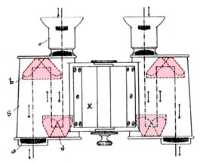 Binoculars are a lifetime purchase.
Binoculars are a lifetime purchase.
Therefore, it is worthwhile to pay attention to quality when buying.
For this reason, we have only included binoculars from companies in our binocular shop where we can be sure that the quality meets our requirements and even more so those of our customers. The companies we have selected have made a name for themselves in the field of optical systems over the past decades. And a pair of binoculars, just like a lens, is an elaborate optical system which, in terms of precision and manufacturing technology, is in no way inferior to a top-quality lens in the case of high-quality binoculars - and the whole thing even times two, because most binoculars are binoculars, not monoculars.
Unlike simple binoculars or astronomical telescopes, high-quality binoculars or observation telescopes (spotting scopes) have sophisticated image reversal systems that produce a true-to-life and laterally correct image. Basically, there are two types of binoculars: roof prism binoculars and porro prism binoculars.
Roof prisms allow a particularly compact design, but require particularly high-quality materials and extremely precise manufacturing techniques to achieve the same imaging performance as a porro system. Almost all roof prism binoculars have an internal focusing system, i.e. the focus is adjusted via worm gears which move only one lens (lens group) inside the binoculars. From the outside, i.e. visibly, nothing shifts. Since there are no external guiding surfaces, dust, dirt and humidity are not sucked in. In addition to comfortable handling, internal focusing also has the advantage that the lenses have a longer service life. Sealing the glass against water is easier and cheaper with roof prism glasses due to the internal focusing. The classic design is the porroprism system, so named after its inventor Ignazio Porro, who invented the first porroprism glass in 1854. Porro prisms have the advantage that the optical quality is inherently very good and the lenses and prisms do not have to be reworked quite as elaborately as with roof prism binoculars. For extremely high-quality binoculars and for special binoculars, however, roof prism systems are used almost exclusively these days.
The classic design is the porroprism system, so named after its inventor Ignazio Porro, who invented the first porroprism glass in 1854. Porro prisms have the advantage that the optical quality is inherently very good and the lenses and prisms do not have to be reworked quite as elaborately as with roof prism binoculars. For extremely high-quality binoculars and for special binoculars, however, roof prism systems are used almost exclusively these days.
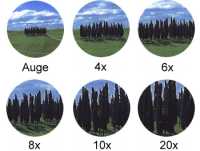 The type designation of a pair of binoculars already reveals a lot about the optics and thus also about the possible uses of the glass. Binoculars always have at least 2 numbers, e.g. 7x50. The first number is always smaller than the second and indicates the magnification factor, in our example 7x, i.e. the observer sees an object 7 times larger or 7 times closer than with the naked eye.
The type designation of a pair of binoculars already reveals a lot about the optics and thus also about the possible uses of the glass. Binoculars always have at least 2 numbers, e.g. 7x50. The first number is always smaller than the second and indicates the magnification factor, in our example 7x, i.e. the observer sees an object 7 times larger or 7 times closer than with the naked eye.
Magnification factors between 7 and 10 are also called standard magnifications. They are the most reasonable compromise between the gain in detail perception, a design that is as compact as possible and freehand observation. Binoculars with a higher magnification can no longer be held steady due to hand unsteadiness and can therefore usually no longer be used sensibly, as they can only be used laid on or with a tripod.
The second (larger) value indicates the lens diameter of the entrance pupil in millimetres. The diameter of the entrance pupil determines how much light can enter the lens. This is a decisive feature for the performance of the binoculars in twilight. Dividing the value of the entrance aperture by the magnification gives the size of the exit pupil in millimetres. In our example, the exit pupil of a 7x50 binocular thus measures 7.14mm. In a young person, the eye pupil measures a maximum of 8mm and is therefore optimally adapted to 7x50 binoculars. The light falling through the binoculars is therefore used optimally. With increasing age, the eye pupil is no longer able to open to 8mm. From the age of 50, it is usually only 5mm, and from the age of 60, it is usually only 4mm. Older people can therefore no longer take advantage of such a fast lens as a 7x50 and should rather purchase a smaller, lighter 8x42 or 10x42, as these two lenses are better suited to their eye pupils.
In our example, the exit pupil of a 7x50 binocular thus measures 7.14mm. In a young person, the eye pupil measures a maximum of 8mm and is therefore optimally adapted to 7x50 binoculars. The light falling through the binoculars is therefore used optimally. With increasing age, the eye pupil is no longer able to open to 8mm. From the age of 50, it is usually only 5mm, and from the age of 60, it is usually only 4mm. Older people can therefore no longer take advantage of such a fast lens as a 7x50 and should rather purchase a smaller, lighter 8x42 or 10x42, as these two lenses are better suited to their eye pupils.
Many binoculars have a few letters behind the two numbers that indicate the magnification and the lens diameter, which usually have a special meaning. I will list some of them here, unfortunately there is no official standard, so some features have different abbreviations and some abbreviations stand for different features:
B - for many companies stands for "suitable for spectacle wearers", i.e. the binocular in question has a particularly wide eyepiece distance so that the spectacle wearer can also see the complete field of view without shadows.
G , GA or RA - stands for "rubber armed", these binoculars are protected against impact and shock as well as against splash water by a rubber armouring (usually polyurethane), which also absorbs the noise that occurs during focusing.
WP - stands for "water proof", with waterproof binoculars special sealing rings
are used. The pores are impregnated in a process lasting several hours and the vacuum in the glass is filled with nitrogen. This means that no water can penetrate the glass, some are watertight at a depth of 1m for up to 5 minutes and particularly high-quality binoculars are even pressure-tight up to 5m.
CF - sometimes stands for "CentralFocus", i.e. central drive, but also for "CloseFocus", now and then also for "Compact" - CloseFocus means that the glass has a very short close-up focusing distance, usually between 2 and 4m, while "normal" binoculars can usually only be focused from 5 metres. A short closest focusing distance is especially important when observing small animals, songbirds and plants. To prevent parallax, the closest focusing distance for binoculars is at least 1 metre.
MC - stands for "multi-coating" (Multi Coated), high quality binoculars are all multi-coated, therefore this is not explicitly noted in the type designation.
IS - stands for "Image Stabiliser", binoculars with image stabiliser, which are particularly popular with ornithologists and nature observers.
UC - stands for "ultra compact", a very small and light binocular usually made of aluminium or even titanium.
W , WF , WW or Wide - stands for "wide angle", these binoculars have a very large field of view.
HP - stands for "HighEyepoint", i.e. large exit pupil aperture
.
D - stands for "Dachkant"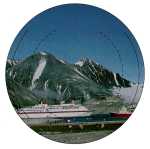 The field of view is also usually engraved on the binoculars either in metres or as degrees. This is the area that can be viewed at a distance of 1000 metres. The field of view is smaller the higher the magnification. For example, a 7x42 has a field of view of 140m/1000m and a 10x42 of the same series has a field of view of 110m/1000m. The objective angle of view can be calculated by dividing the field of view by 17.5. So if the angle of view is stamped on a glass, you only have to multiply it by 17.5 to get the field of view at 1000m (e.g. 6.6° is approx. 115m/1000m).
The field of view is also usually engraved on the binoculars either in metres or as degrees. This is the area that can be viewed at a distance of 1000 metres. The field of view is smaller the higher the magnification. For example, a 7x42 has a field of view of 140m/1000m and a 10x42 of the same series has a field of view of 110m/1000m. The objective angle of view can be calculated by dividing the field of view by 17.5. So if the angle of view is stamped on a glass, you only have to multiply it by 17.5 to get the field of view at 1000m (e.g. 6.6° is approx. 115m/1000m).
Another important value is the twilight factor. It says something about the visual performance and detail perceptibility of a lens. The twilight factor is calculated from the square root of the product of magnification and objective lens diameter. To come back to our 7x50 binoculars: Root of 7x50 = 18.71. The higher the twilight factor, the better (theoretically) details can be seen in low light conditions. In practice, however, this is not so meaningful, as the performance of the binoculars is also determined by the quality of the optics and the light transmission, which in turn depends on the coating.
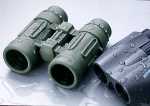 For "always-on" binoculars for "easy retrieval", foldable compact binoculars with a magnification of 7-10x are best. The higher the magnification, the better distant objects, animals, people or landscapes can be perceived. A 10x25 pair of binoculars provides a ten times larger image of the object than is visible to the naked eye, i.e. an animal 50m away is seen as if from 5m away.
For "always-on" binoculars for "easy retrieval", foldable compact binoculars with a magnification of 7-10x are best. The higher the magnification, the better distant objects, animals, people or landscapes can be perceived. A 10x25 pair of binoculars provides a ten times larger image of the object than is visible to the naked eye, i.e. an animal 50m away is seen as if from 5m away.
Unfortunately, at high magnification there is also the disadvantage of hand restlessness. The image becomes so "jittery" above 10x that even with the best quality binoculars, details can no longer be clearly recognised. In connection with sporting activities such as hiking, mountaineering or climbing, unclouded binocular use becomes even more difficult. A tripod or monopod can help here, but who buys a compact pair of binoculars for hiking and then has to lug around a heavy and bulky tripod as well? Binoculars with optical stabilisers, such as those offered mainly by Canon, are a really effective remedy for hand tremor. Binoculars with stabiliser have 2 gyro sensors for horizontal and vertical movement, which detect a movement of the binoculars and compensate this unsteadiness with moving optical elements via a microcomputer. The IS binoculars from Canon are only slightly heavier and larger than comparable binoculars without stabiliser, but even at 15x magnification they guarantee an absolutely steady image without any loss of quality. From my own experience, I can say that looking through binoculars with an optical image stabiliser is a truly sensational experience.
Binoculars with optical stabilisers, such as those offered mainly by Canon, are a really effective remedy for hand tremor. Binoculars with stabiliser have 2 gyro sensors for horizontal and vertical movement, which detect a movement of the binoculars and compensate this unsteadiness with moving optical elements via a microcomputer. The IS binoculars from Canon are only slightly heavier and larger than comparable binoculars without stabiliser, but even at 15x magnification they guarantee an absolutely steady image without any loss of quality. From my own experience, I can say that looking through binoculars with an optical image stabiliser is a truly sensational experience.
With the abundance of products and brands, it is very difficult to divide them into logically comprehensible groups, but I will nevertheless make this attempt: The simplest binoculars are those based on the Galileo principle; these binoculars, known as "theatre binoculars", have a magnification of 3 - 4 times and do not need prisms at all. For theatre, opera or concerts, they are perfectly adequate at short distances and take up little space. However, if you want to do something good for your eyes, you should go for the UltraCompact prism binoculars (e.g. the UCIII series from Minolta or the two FC binoculars with lead-free glass and in the Ixus design from Canon) for this field of application as well.
The simplest binoculars are those based on the Galileo principle; these binoculars, known as "theatre binoculars", have a magnification of 3 - 4 times and do not need prisms at all. For theatre, opera or concerts, they are perfectly adequate at short distances and take up little space. However, if you want to do something good for your eyes, you should go for the UltraCompact prism binoculars (e.g. the UCIII series from Minolta or the two FC binoculars with lead-free glass and in the Ixus design from Canon) for this field of application as well.
Binoculars with 7 - 10x magnification are called standard binoculars because they usually allow steady hand-held viewing. As mentioned at the beginning, the mostly foldable compact binoculars are the most popular, as they do not take up much space and do not have a negative impact in terms of weight. For many applications, it is better to have at least one small pair of compact binoculars on hand than to have binoculars with high magnification, high twilight factor and large field of view at home in the cupboard. The monoculars (here the Zeiss company offers the largest selection of absolutely high-quality monoculars) through which the observer looks with only one eye are particularly compact. This is recommended for occasional and short-term use. However, if you want to look into the distance more often, then you should opt for a binocular, as single-eye vision is extremely difficult for most people. Very many monoculars can also be used as a triple or sextuple magnifier at close range, a quite useful side effect.
The monoculars (here the Zeiss company offers the largest selection of absolutely high-quality monoculars) through which the observer looks with only one eye are particularly compact. This is recommended for occasional and short-term use. However, if you want to look into the distance more often, then you should opt for a binocular, as single-eye vision is extremely difficult for most people. Very many monoculars can also be used as a triple or sextuple magnifier at close range, a quite useful side effect.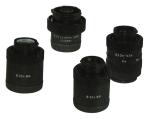
Also designed for single-eye observation are spotting scopes (also called observation telescopes). These special telescopes with magnifications up to 60x and mostly interchangeable eyepieces are mainly used by ornithologists, hunters, foresters and sport shooters - of course exclusively with a tripod.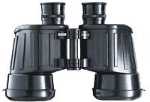 In binoculars, the term "night glass" has become common. These are binoculars with a high twilight factor and/or high light intensity (e.g. 7x50, 8x50 and 8x56). These binoculars can be used even under critical light conditions with good to very good results. Optimal, of course, are binoculars with residual light amplifiers, the so-called night vision devices, which, however, are only offered at rather hefty prices by a few companies specialising in such devices.
In binoculars, the term "night glass" has become common. These are binoculars with a high twilight factor and/or high light intensity (e.g. 7x50, 8x50 and 8x56). These binoculars can be used even under critical light conditions with good to very good results. Optimal, of course, are binoculars with residual light amplifiers, the so-called night vision devices, which, however, are only offered at rather hefty prices by a few companies specialising in such devices.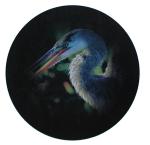 Lenses with the widest possible angle of view (or large field of view) are called wide-angle binoculars and often have the designation W, WW or WF (for WideField) in the type designation. They are very suitable for following sporting events and are also popular with mountain hikers. However, you have to pay for the wider viewing angle with a little more weight and a higher price.
Lenses with the widest possible angle of view (or large field of view) are called wide-angle binoculars and often have the designation W, WW or WF (for WideField) in the type designation. They are very suitable for following sporting events and are also popular with mountain hikers. However, you have to pay for the wider viewing angle with a little more weight and a higher price.
When buying binoculars, spectacle wearers should look for an exit pupil that is as far back as possible. Most binoculars bear the letter "B" in their type designation, e.g. almost all binoculars made by Leica and Zeiss are excellently suited for spectacle wearers, so that the entire field of view can be viewed without edge shading even when wearing glasses. Lastly, I would like to briefly mention the special binoculars, which were usually developed for only one field of application. These are, for example, waterproof binoculars with a built-in compass, e.g. for sailboat captains, and binoculars with a distance scale or even with integrated infrared distance measurement.
Lastly, I would like to briefly mention the special binoculars, which were usually developed for only one field of application. These are, for example, waterproof binoculars with a built-in compass, e.g. for sailboat captains, and binoculars with a distance scale or even with integrated infrared distance measurement.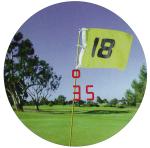 Some examples include: The Leica Genovid combines the pure retrieval of distant objects with laser rangefinder and electronic compass for sophisticated observation and precise orientation in the field, at sea and in the air. Or the Leica LRF 800 Rangemaster, a laser rangefinder that not only tells you to within one metre at 800m how far away the capital twelve-pointer is, but also helps you with elaborate construction projects or helps you improve your handicap with 7x magnification.
Some examples include: The Leica Genovid combines the pure retrieval of distant objects with laser rangefinder and electronic compass for sophisticated observation and precise orientation in the field, at sea and in the air. Or the Leica LRF 800 Rangemaster, a laser rangefinder that not only tells you to within one metre at 800m how far away the capital twelve-pointer is, but also helps you with elaborate construction projects or helps you improve your handicap with 7x magnification.
. 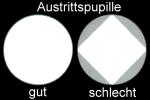
Even before you buy, or (in the case of online purchases) shortly after, it is very easy to determine whether you have bought a visually inferior glass:
. Look through the eyepiece at a bright surface from a distance of 20-30cm. You should now be able to see a white circular area that does not turn grey at the edges or even look angular. If you have purchased binoculars that do not have a circular light spot, then some of the light through the binoculars will not reach your eye at all. Furthermore, when you look into the lens (the other end of the binoculars with the larger glass surface), you can usually see reflections and bright glass surfaces in glasses that are not well corrected, if you look at the lens from some distance. This results in the image seen through the binoculars being low in contrast and lacking in brilliance. Other quality criteria can only be noticed after the binoculars have been in use for some time. Then you usually notice with "cheap" binoculars that the glass is not optically adjusted correctly, which leads to headaches when you look through the glass for a longer time, or that the actual magnification is out of tolerance. With (the branded) binoculars we sell, such faults are not to be found :-).
Other quality criteria can only be noticed after the binoculars have been in use for some time. Then you usually notice with "cheap" binoculars that the glass is not optically adjusted correctly, which leads to headaches when you look through the glass for a longer time, or that the actual magnification is out of tolerance. With (the branded) binoculars we sell, such faults are not to be found :-). Another detail that people with mild ametropia should pay attention to is the eyepiece setting. Here it is important to know up to which dioptre number the eyepiece can be adjusted to the visual defect of the eye and, above all, whether the eyepiece can be secured against accidental adjustment by means of a catch.
Another detail that people with mild ametropia should pay attention to is the eyepiece setting. Here it is important to know up to which dioptre number the eyepiece can be adjusted to the visual defect of the eye and, above all, whether the eyepiece can be secured against accidental adjustment by means of a catch.
The be-all and end-all of binocular quality is the coating of the lenses and prisms. Unfortunately, it is not possible for the layman to determine whether and to what extent the binoculars are coated. In the case of coating, anti-reflective layers (metals) are vapour-deposited onto the lenses. First of all, it is important which and how many lenses and prisms are coated and, above all, how they are coated, because the coating must be adapted to the vision of the human eye. Thus, a binocular lens that shimmers in all colours is not a seal of quality, because bright colours do not help much, but rather absorb even more light and prevent you from recognising reflections that occur in the glass (this is why you usually see "coatings" in extremely bright colours on binoculars from price-aggressive suppliers). Only really reputable brand manufacturers guarantee that the coating on the binoculars will really give you lasting pleasure in brilliant vision. Binoculars in the higher performance and therefore price class are waterproof and usually have a nitrogen (rarely gas) filling. This allows them to be used in rain and snow. However, since most people hardly want to look through binoculars in these weather conditions, the nitrogen filling is important above all to prevent the glass from fogging up inside when the temperature changes. Of course, such binoculars also have an internal focusing system, which not only offers optical advantages, but above all allows comfortable handling of the binoculars and also ensures a long-lasting glass.
Binoculars in the higher performance and therefore price class are waterproof and usually have a nitrogen (rarely gas) filling. This allows them to be used in rain and snow. However, since most people hardly want to look through binoculars in these weather conditions, the nitrogen filling is important above all to prevent the glass from fogging up inside when the temperature changes. Of course, such binoculars also have an internal focusing system, which not only offers optical advantages, but above all allows comfortable handling of the binoculars and also ensures a long-lasting glass.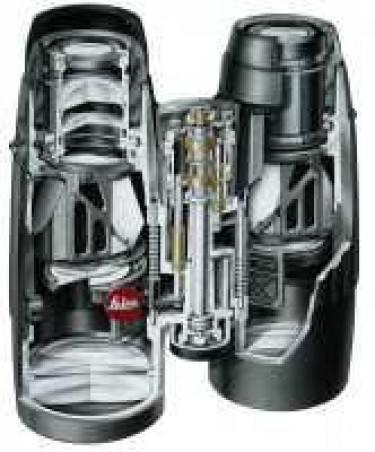 If you take a close look at the intricate and extremely precise optics of the binoculars made by the well-known manufacturers (and offered by us), it is quite astonishing how high the technical standard is.
If you take a close look at the intricate and extremely precise optics of the binoculars made by the well-known manufacturers (and offered by us), it is quite astonishing how high the technical standard is.
All binoculars from these manufacturers deserve your trust, which is also reflected in the very long warranty period of several decades up to lifetime.
Simply subscribe and benefit as a newsletter recipient every week: